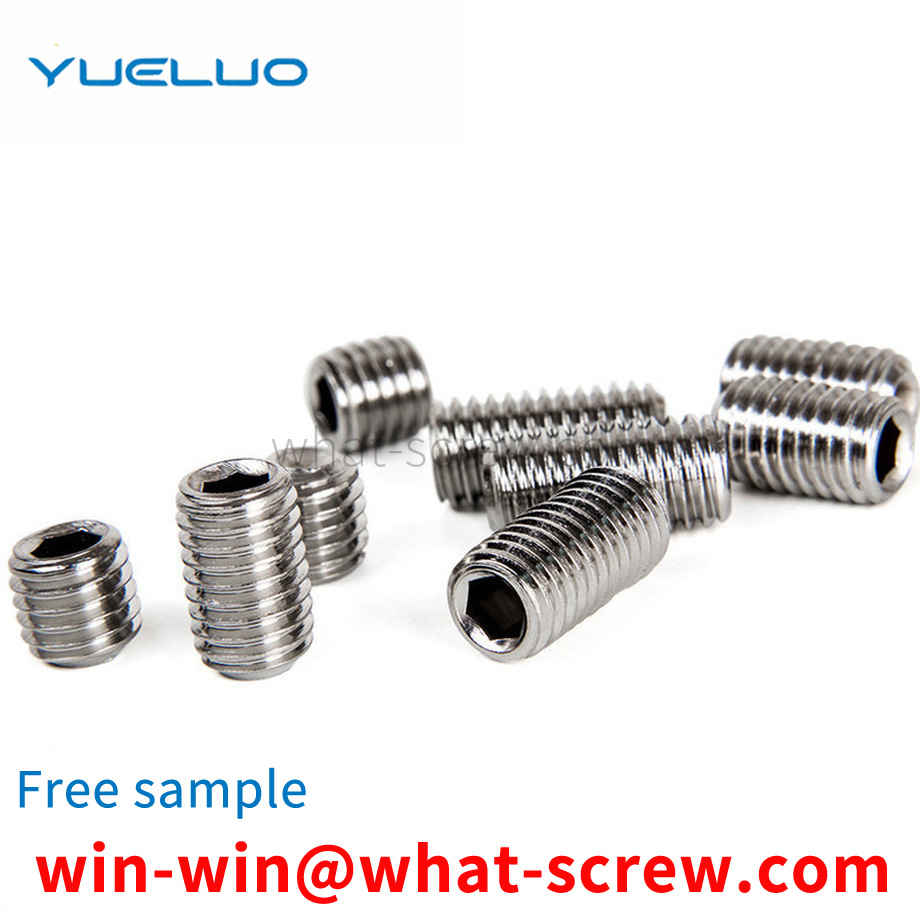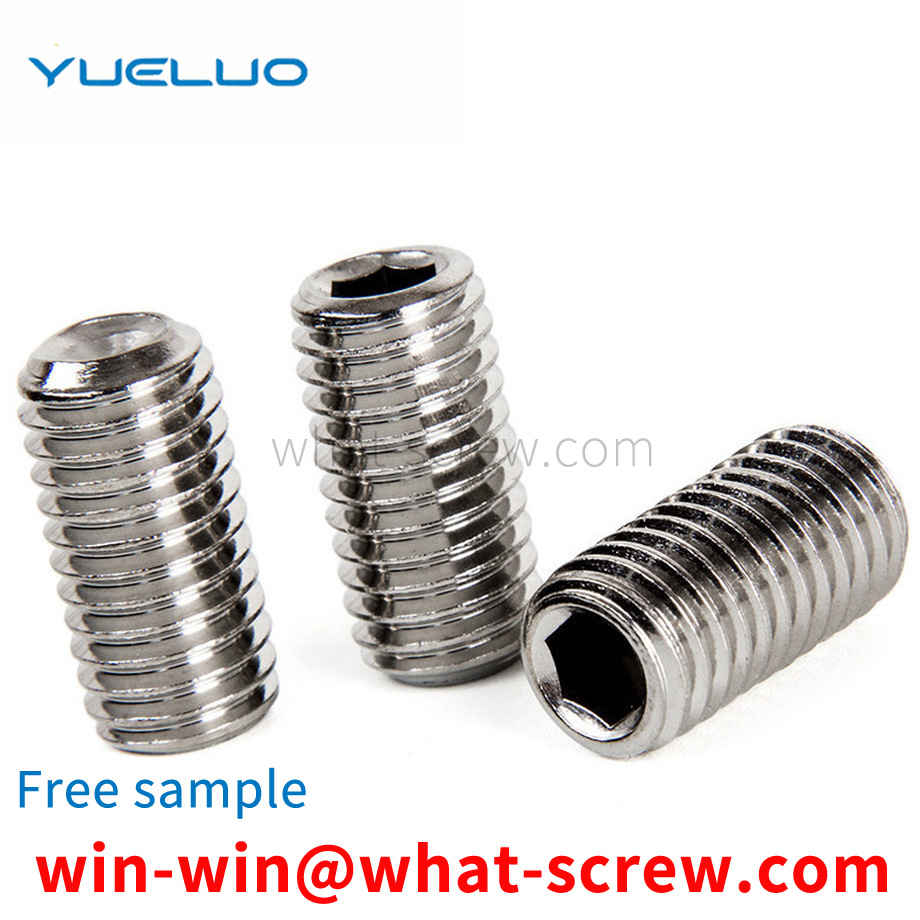Yueluo's thin plate rivet method, the thickness of the metal thin plate is less than 0.8mm. The convex rib extrudes the metal sheet adjacent to the rivet hole. The protruding rib is annular, and the protruding rib surrounds the rivet. The rivet head is provided with a positioning structure, the rivet head is provided with a positioning structure for docking the positioning structure, and the positioning structure and the positioning structure are mutually butted through the rivet to align the convex rib with the rivet
The positioning pin is a pin designed to accurately position the two adjacent parts of the mold in a mold composed of two or more parts. It can be seen that the positioning pin plays a positioning role, and the mold must be accurately synchronized when it is closed. product, and the positioning pin can make the upper and lower molds play a role in accurate positioning. In the mold design and manufacture of Yueluo, the positioning pin is one of the most common parts. Since it is only used for positioning between parts, few people will pay too much attention to it. In the cold stamping process of Yueluo, the dimensional accuracy of the blanking parts depends on the size of the working part of the punch and the concave die, and the dimensional difference between them constitutes the blanking die gap. Gap is an important process parameter for die design, and its size has a great influence on the quality of the section of the blanking part, the blanking force, and the life of the die. If the gap is too large, punching burrs will appear in punching; if the gap is too small, secondary cracks will occur in the section and extrusion burrs will appear, which will make the quality of the section after punching unsatisfactory, and a reasonable gap will not only help the punching section. The improvement of the quality also contributes to the improvement of the lifespan of the 6-pack.
Blind rivets (blind rivets) --------- rivet body (rivet body) mandrel (rivet stem or rivet mandrel). It is a type of rivet for single-sided riveting, but it must be riveted with a special tool - a rivet gun (manual, electric, pneumatic). When riveting, the rivet core is pulled by a special rivet gun to expand the rivet body and play a riveting role. This type of rivet is especially suitable for riveting occasions where it is inconvenient to use ordinary rivets (riveting from both sides), so it is widely used in construction, automobiles , ships, aircraft, machinery, electrical appliances, furniture and other products. Among them, the open-type oblate head blind rivets are the most widely used, the countersunk head blind rivets are suitable for riveting occasions where the surface needs to be smooth, and the closed blind rivets are suitable for riveting occasions that require high load and certain sealing performance.
Ordinary thread Ordinary coarse thread: Feature code M+ Nominal diameter + Rotation + thread tolerance zone code (pitch diameter, top diameter) - Rotation length Ordinary fine thread: Feature code M+ Nominal diameter * thread pitch + direction of rotation + thread tolerance With code (middle diameter, top diameter) - the length of screwing is omitted for right-handed threads, and the left-handed thread is represented by LH. M 16-5g6g means coarse thread ordinary thread, nominal diameter 16, right-handed, the thread tolerance zone is 5g in the middle diameter and 6g in the major diameter, and the screwing length is considered as the medium length. M16×1 LH-6G means fine thread ordinary thread, nominal diameter 16, pitch 1, left-handed, thread tolerance zone medium diameter and major diameter are both 6G, and the screwing length is considered as medium length. The labeling format is: feature code (cylindrical pipe thread is represented by G, conical pipe thread is represented by NPT) + size code + tolerance grade code + rotation direction G1A--LH represents inch non-threaded sealing pipe thread, size code 1in, left-handed, tolerance The grade is A grade. Rcl/2 means inch thread seal taper pipe thread, size code 1/2in, right-handed.
Bolt: A type of fastener consisting of a head and a screw (a cylinder with an external thread), which needs to be matched with a nut to fasten and connect two parts with through holes. This form of connection is called a bolted connection. If the nut is unscrewed from the bolt, the two parts can be separated, so the bolt connection is a detachable connection. [1] Stud: A type of fastener that has no head and only has external threads on both ends. When connecting, one end of it must be screwed into the part with the internal threaded hole, the other end must pass through the part with the through hole, and then the nut must be screwed on, even if the two parts are tightly connected as a whole. This form of connection is called a stud connection, which is also a detachable connection. It is mainly used for occasions where one of the connected parts is thick, requires a compact structure, or is not suitable for bolt connection due to frequent disassembly. [1] Screw: It is also a type of fastener consisting of a head and a screw. It can be divided into three categories according to the purpose: machine screws, set screws and special-purpose screws. Machine screws are mainly used for a fastened connection between a part with a fixed threaded hole and a part with a through hole, without the need for nut matching (this connection form is called screw connection, which is also a detachable connection; it can also be Cooperate with the nut, it is used for the fast connection between two parts with through holes.) The set screw is mainly used to fix the relative position between the two parts. Special purpose screws, such as eyebolts, are used for hoisting parts. [1] Nuts: with internal threaded holes, generally in the shape of a flat hexagonal column, but also in a flat square column or flat cylindrical shape, with bolts, studs or machine screws, used to fasten and connect two parts, make it a whole. [1] 5. Self-tapping screw: Similar to machine screw, but the thread on the screw is a special thread for self-tapping screw. It is used to fasten and connect two thin metal components to make them a whole. Small holes need to be made in advance on the components. Due to the high hardness of this kind of screw, it can be directly screwed into the hole of the component, so that the Forming a corresponding internal thread [1] 6. Wood screw: It is also similar to a machine screw, but the thread on the screw is a special thread for wood screws, which can be directly screwed into wooden components (or parts) to connect a band through The metal (or non-metallic) part of the hole is fastened to a wooden member. This connection is also a detachable connection. [1] 7. Washers: A type of fastener with an oblate annular shape. It is placed between the supporting surface of the bolt, screw or nut and the surface of the connecting part, which increases the contact surface area of the connected parts, reduces the pressure per unit area and protects the surface of the connected parts from damage; another type of elastic washer, It can also play a role in preventing the nut from loosening. [1] 8. Retaining ring: It is installed in the shaft groove or shaft hole groove of the machine and equipment, and plays the role of preventing the parts on the shaft or the hole from moving left and right. [1] 9. Pins: mainly used for positioning the left and right parts, and some are also used for connecting parts, fixing parts, transmitting power or locking fasteners. [1] 10. Rivet: A type of fastener consisting of a head and a shank, which is used to fasten and connect two parts (or components) with holes to make them a whole. This form of connection is called rivet connection, or riveting for short. It is a non-removable link. Because if the two parts joined together are separated, the rivets on the parts must be broken. [1] 11. Components and connection pairs: Assemblies are a type of fasteners supplied in combination, such as a combination of a certain machine screw (or bolt, self-supplied screw) and a flat washer (or spring washer, lock washer); Connection pair refers to a type of fastener that is supplied by a combination of special bolts, nuts and washers, such as high-strength hexagon head bolt connection pairs for steel structures. [1] 12. Welding nail: a heterogeneous fastener composed of a nail rod and a nail head (or no nail head), which is fixed to a part (or component) by welding, so as to be connected with other parts. .
We have many years of experience in the production and sales of screws, nuts, flat washers, etc. The main products are: aluminum profile European standard T-nuts, high-strength thickened nuts and nuts, sets of hexagonal nuts, terminal welding terminals and other products, we can provide you with The right fastener solution for you.



















 Service Hotline
Service Hotline




